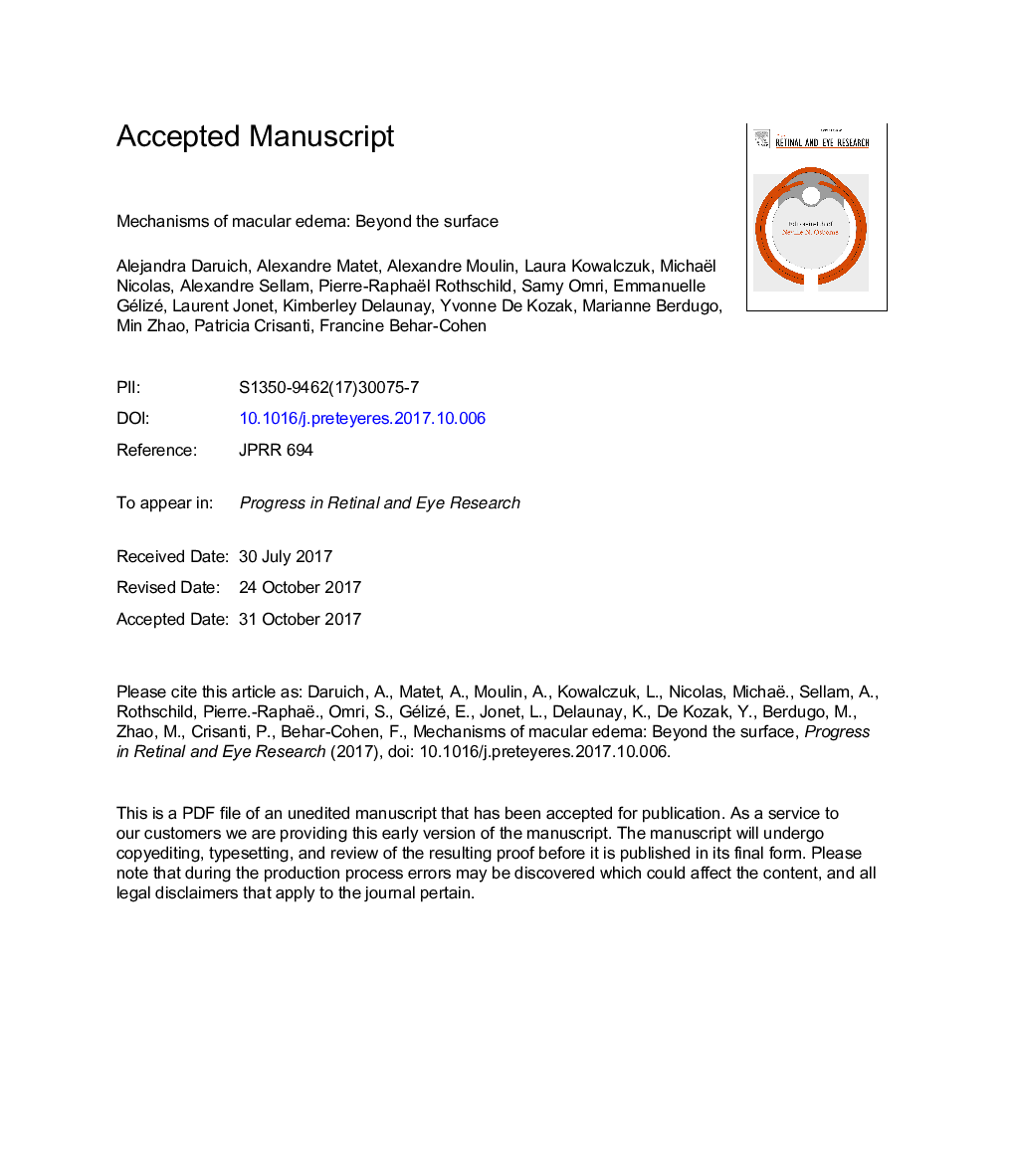| Article ID | Journal | Published Year | Pages | File Type |
|---|---|---|---|---|
| 8795027 | Progress in Retinal and Eye Research | 2018 | 176 Pages |
Abstract
Macular edema consists of intra- or subretinal fluid accumulation in the macular region. It occurs during the course of numerous retinal disorders and can cause severe impairment of central vision. Major causes of macular edema include diabetes, branch and central retinal vein occlusion, choroidal neovascularization, posterior uveitis, postoperative inflammation and central serous chorioretinopathy. The healthy retina is maintained in a relatively dehydrated, transparent state compatible with optimal light transmission by multiple active and passive systems. Fluid accumulation results from an imbalance between processes governing fluid entry and exit, and is driven by Starling equation when inner or outer blood-retinal barriers are disrupted. The multiple and intricate mechanisms involved in retinal hydro-ionic homeostasis, their molecular and cellular basis, and how their deregulation lead to retinal edema, are addressed in this review. Analyzing the distribution of junction proteins and water channels in the human macula, several hypotheses are raised to explain why edema forms specifically in the macular region. “Pure” clinical phenotypes of macular edema, that result presumably from a single causative mechanism, are detailed. Finally, diabetic macular edema is investigated, as a complex multifactorial pathogenic example. This comprehensive review on the current understanding of macular edema and its mechanisms opens perspectives to identify new preventive and therapeutic strategies for this sight-threatening condition.
Related Topics
Life Sciences
Neuroscience
Sensory Systems
Authors
Alejandra Daruich, Alexandre Matet, Alexandre Moulin, Laura Kowalczuk, Michaël Nicolas, Alexandre Sellam, Pierre-Raphaël Rothschild, Samy Omri, Emmanuelle Gélizé, Laurent Jonet, Kimberley Delaunay, Yvonne De Kozak, Marianne Berdugo, Min Zhao,
